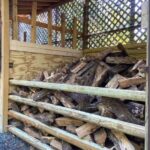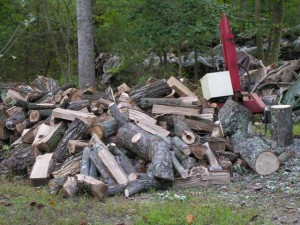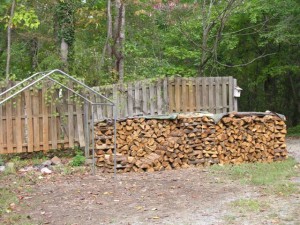 How do you determine the value of the firewood you are buying? It is my opinion that the true value of firewood is really about the buyer’s desire for service and convenience. Most consumers consider the standard “cord” to be the best measurement of value, but I would suggest that it is not the only, nor the best, method of calculating firewood value.
How do you determine the value of the firewood you are buying? It is my opinion that the true value of firewood is really about the buyer’s desire for service and convenience. Most consumers consider the standard “cord” to be the best measurement of value, but I would suggest that it is not the only, nor the best, method of calculating firewood value.
Wood is made of plant fiber, water and air. The proportions of those three elements determines the heating potential of firewood. Trees have different densities of wood fiber both between individual trees of the same species, and between different species. For example, a truck-load of large oak logs is more dense and therefore weighs more than the same truck-load full of small-diameter oak branches. And a truck-load of pine is less dense than a truck-load of oak and therefore weighs less than the oak. Although the heating potential of all wood is relatively the same, due to the difference in density (weight), a hardwood such as oak generally burns longer per stick than a softwood such as pine.
Moisture content (water) varies among trees and of course a pound of dry wood burns hotter than a pound of moist, or green wood. Green wood cut when the sap is down (during the winter months) and allowed to dry during the warmer months produces the very best burning wood either measured by the pound (weight) or by the cubic foot (volume).
Commercial wood buyers look to buy solid wood mass generally by the pound and usually the wood is green and weighs heavy due to the water content. A standard cord of firewood is 128 cubic feet by volume, but varies in weight and density due to its moisture content, tree species, log diameter, and percent of solid wood. Because of this variability, comparing volume alone to dollar cost is not a reliable method for judging the value of firewood.
So how do you determine the best value when purchasing firewood? The answer may depend on you and your preferences. Many people purchase bundled wood for the convenience and dependability of easy burning. But this convenience costs more. For example, bundled wood in the marketplace varies in tree species and weight and is generally sold by volume, often in a size of .75 cu. ft. A standard cord being 128 cu.ft of wood can produce roughly 170 bundles. If the price paid for a bundle of wood is $5.00 than the cost of a cord by volume of bundled firewood is $5.00 x 170= $850. That is a very high price for a cord of wood.
Firewood sold in bulk by weight green at processing mills costs around $150 per cord volume. The cost added to that to reach a consumer includes transportation, processing, grading and sorting to size, storage and drying, packaging, stacking, advertising, and marketing. Some people will accept green wood straight from the mill paying wholesale cost plus shipping and handling charges. Others require the wood to be dry and ready to burn and agree to transport the wood themselves to save on handling fees. And others request that the wood be stacked upon delivery. So the price you pay depends on your preference for convenience and how much service you require.
As far as heat value is concerned a pound of dry pine has roughly the same British Thermal Units (BTUs ) as a pound of oak. Note that a pine is less dense and weighs less than oak. Compared by volume, pine produces less BTUs
than oak. But when it comes to starting a fire, dry pine is my preference.
Habitat Services offers quality firewood sold by weight green, by stacked measure seasoned, and in bundles with kindling. We are a service company. Give us a call to place your order and get a price and delivery date.


